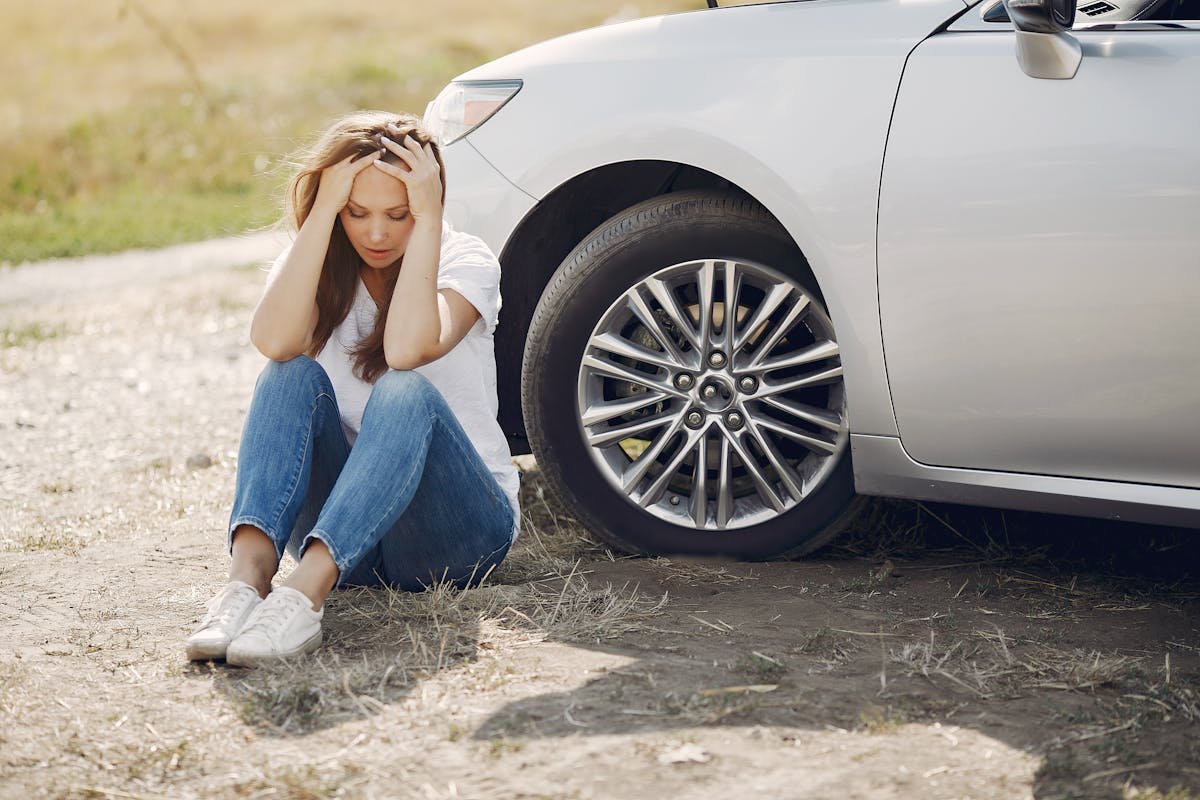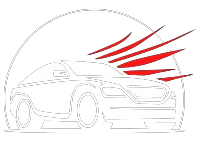The discourse surrounding liability laws, particularly those amended in the wake of significant car crashes, offers a compelling exploration of the evolving legal landscape. These laws, shifting from the rigid model of contributory negligence to the more nuanced comparative negligence systems, reflect a desire for equitable damage allocation. With the advent of autonomous vehicles and advanced safety mechanisms, novel complexities are arising in apportioning blame, necessitating a reevaluation of existing legal norms. As we navigate this intricate terrain, the question remains: how well are our current laws adapting to these new challenges?
Understanding Vehicle Accident Liability
Although it may appear straightforward, understanding vehicle accident liability can be a complex process, requiring an in-depth exploration into the specifics of each case. A significant factor in this exploration is driver negligence, which often plays a substantial role in insurance claims and fault determination. Accident reporting is an essential component in this regard, providing a detailed account of the incident for review.
Legal representation is often required to navigate the intricacies of these cases, as they involve a range of elements like compensation models, evidence gathering, witness testimonies, and injury assessments. Attorneys adept in these areas can effectively advocate for their clients, ensuring that all aspects of the incident are thoroughly examined and fault is accurately assigned.
Punitive damages may also come into play in situations where gross negligence or reckless behavior is evident. These are intended to penalize the offending party and deter similar conduct in the future. This makes the process of understanding vehicle accident liability not just about determining fault but also about seeking justice and promoting safer driving behaviors.
Evolution of Liability Laws
Over the past few decades, liability laws have undergone significant transformations. These changes have been fueled primarily by shifts in negligence standards and interpretations of joint liability.
Negligence standards have evolved to meet the demands of modern society. Initially, the fault was determined using a contributory negligence approach, where even a slight degree of fault from the plaintiff could bar recovery. However, this was seen as overly harsh and consequently, many jurisdictions shifted to comparative negligence, which allows for a more equitable distribution of damages based on the degree of fault.
Joint liability, on the other hand, has seen substantial changes in its application. Traditionally, it held all defendants collectively liable for the full amount of damages. This doctrine, however, was criticized for being inequitable, leading to the introduction of several liability. Under this system, each defendant is held responsible only for their proportion of the fault, fostering a sense of fairness.
These transformations indicate a shift towards a more balanced liability system. Through continuous evolution, liability laws aim to adapt to societal changes, ensuring justice in the area of vehicle accidents.
Impact of Technological Advancements
As we proceed, we will analyze the influence of technological advancements on liability laws, with a specific focus on autonomous vehicles, advanced safety features, and the role of technology in accidents. The advent of autonomous vehicles presents new challenges in determining liability, given their unique operational dynamics. Similarly, we must consider how advanced safety features may alter liability determinations, and address the implications of technology’s role in accident causation.
Autonomous Vehicles and Liability
With the advent of autonomous vehicles, an entirely new set of liability concerns has emerged in the domain of car crashes. Autonomous liability, a term connected to these vehicles, has blurred traditional lines of responsibility assignment, leading to complex debates over accident accountability.
The integration of this technology into society’s daily commute has revealed significant regulatory challenges. These challenges are not only confined to defining safety standards but also extend to establishing a legal precedent for autonomous vehicle ethics. The ethical considerations concerning these vehicles’ decision-making algorithms in a potential accident scenario remain a contentious issue.
Furthermore, the insurance implications associated with autonomous vehicles are extensive and not entirely understood. This is largely due to the absence of a long-term data set regarding their safety record. Such uncertainty can affect consumer trust, a critical factor for the widespread adoption of this technology.
Advanced Safety Features Impact
The majority of modern vehicles are now equipped with a suite of advanced safety features, marking a revolutionary shift in the landscape of automobile safety. These features, which include autonomous braking systems, lane departure warnings, and blind spot detection, are part of a broader trend towards increased safety technology in vehicles.
The advent of these technologies not only enhances road safety but also carries considerable liability implications. In the event of a car crash, the effectiveness and performance of these features can be scrutinized, potentially shifting the burden of liability away from the driver. A malfunctioning or ineffective safety feature could result in the manufacturer being held accountable for any ensuing damages.
Moreover, the integration of these advanced safety features has also necessitated changes in the process of determining liability. It has become increasingly critical to have a thorough understanding of how these safety technologies function and their potential limitations. This understanding can provide valuable insights into whether a car crash was a result of human error or a failing safety feature. Consequently, this paradigm shift in vehicle safety technology greatly influences the determination and apportionment of liability in the aftermath of a car crash.
Tech’s Role in Accidents
Steering from the influence of advanced safety features on liability issues, we now turn our attention to the broader impact of technological advancements on vehicular accidents. In recent years, technology integration in vehicles has dramatically influenced driver behavior. Features like automatic braking and lane-keeping assist have been deployed with the aim of accident prevention. However, crash statistics reveal an intricate mix of benefits and drawbacks.
While these advancements have reduced some types of accidents, they also introduced new insurance implications. Liability insurance, for instance, has had to adapt to the changing landscape where it’s not always clear who or what is at fault – the driver, the technology, or a combination. Additionally, these technologies generate vast amounts of data, raising data privacy concerns.
Regulatory challenges are another aspect of this issue. Balancing safety, innovation, and privacy in a rapidly evolving sector is a formidable task for regulators. Laws must address the potential misuse of technology and its implications on liability without stifling innovation. To summarize, technological advancements in vehicles present a complex interplay of benefits and risks, requiring careful consideration from all stakeholders.
Influential Car Crash Cases
As we continue our exploration of liability laws after car crashes, we’ll now examine some influential car crash cases. These significant auto accident lawsuits have been instrumental in shaping and transforming liability laws. We will analyze the details of these cases, the verdicts, and their subsequent impact on the legal landscape.

Noteworthy Auto Accident Lawsuits
What are some of the most influential car crash cases that have shaped automotive liability laws?
Several lawsuits stand out for their impact on establishing negligence standards and comparative fault doctrines. The Grimshaw v. Ford Motor Company case (1981) is a classic example. Here, Ford’s decision to prioritize profit over safety led to punitive damages, setting a precedent for future cases. The insurance implications were significant, leading to changes in policy coverage.
Another notable case, Campbell v. State Farm Mutual Automobile Insurance Co. (2001), raised questions about insurance company responsibilities and the value of good faith in settlement negotiations. This case highlighted the importance of driver education and sparked debates about insurance industry practices.
The jury dynamics in these cases played a critical role in the outcomes. Emotional distress, often evidenced through expert testimonies, was another key factor that informed the juries’ decisions.
These cases illustrate how auto accident lawsuits can influence and shape liability laws. Such legal precedents continue to guide judicial interpretations and rulings in contemporary vehicle accident cases. They underscore the importance of legal discourses in determining liability, assigning fault, and delivering justice in the aftermath of car crashes.
Liability Law Transformations
While it may seem that automotive liability laws are set in stone, in reality, they are subject to continual evolution and refinement. Influential car crash cases have often led to significant transformations in liability law. These changes encompass a range of areas, including negligence standards, insurance reforms, comparative fault, punitive damages, liability insurance, fault determination, and driver accountability.
Negligence standards have been refined over time, with crash investigations playing a key role in fault determination. The use of comparative fault in some jurisdictions, which allows for allocation of blame between parties, has also transformed liability laws. Meanwhile, legal precedents have influenced liability thresholds, determining the degree of fault required to attribute liability.
Insurance reforms, driven by influential car crash cases, have resulted in changes to liability insurance policies, with a greater onus placed on driver accountability. Importantly, punitive damages awarded in these cases have had a profound impact on insurance industry practices, leading to more stringent risk assessment and pricing strategies.
Influential Verdicts’ Impact
Building upon the previous discussion of liability law transformations, we turn our attention to the role of influential verdicts in shaping these laws. Case law, a vital element of the legal system, hinges on the outcomes of notable court cases. These influential verdicts set legal precedents that subsequently affect insurance implications, settlement trends, and compensation models.
Jury decisions, driven by expert testimonies and courtroom strategies, contribute greatly to these influential outcomes. High-profile car crash cases often set the tone for future cases, steering public perceptions and prompting policy shifts. For example, a jury’s sympathy towards a victim can result in a hefty compensation model, altering insurance industry practices to accommodate these trends.
Public perceptions, shaped by these verdicts, can lead to major policy shifts, particularly in liability laws related to car crashes. A case in point is the growing demand for stricter regulations and greater transparency in insurance settlements following a series of high-stakes cases.
Through their ripple effect on the legal landscape, influential verdicts in car accident cases continue to redefine liability laws, drive changes in insurance policies, and shape compensation models. Their impact underscores the dynamic and evolving nature of our legal system.
Modern Shifts in Driver Liability
The landscape of driver liability is undergoing transformative changes in the modern era. This shift has been characterized by an increased emphasis on driver accountability and the insurance implications that this entails. Fundamentally, the legal responsibility of drivers is being redefined through new fault determination approaches and stringent negligence standards.
The evaluation of evidence in car crash cases has become more meticulous, with driver behavior being scrutinized to a greater extent. This is not only for establishing fault but also for designing accident prevention measures. These changes reflect a broader trend towards prioritizing road safety and holding reckless drivers accountable for their actions.
The litigation strategies employed in these cases have also evolved, with a growing focus on robust evidence gathering and sophisticated argumentation. Compensation frameworks too, have witnessed significant modifications, with the aim of ensuring fair restitution for victims.
Victim Rights and Protections
In light of the evolving landscape of driver liability, particular attention must be paid to the rights and protections available to the victims of car crashes. As accident rates show no sign of significant downturn, the significance of victim advocacy and legal protections cannot be overstated.
Victim advocacy plays a vital role in guaranteeing victims receive the required support post-accident. These advocates not only provide emotional support but also guide victims through the often complex legal procedures, making certain their rights are not infringed upon during the process.
Legal protections, on the other hand, provide victims with a sense of security. Laws are continually being revised to guarantee victims have robust protections, safeguarding them from undue financial pressure arising from medical expenses, loss of earnings, or vehicle repairs. These legal safeguards also serve to deter reckless driving, thereby contributing to overall road safety.
However, there is room for further enhancement. To better protect victims’ rights, it is essential to continue refining these protections and advocacy services, taking into account the dynamic nature of societal norms and technological advancements in vehicle safety. This is a vital aspect of the broader paradigm shift in liability laws post-car crashes.
Broader Legal Landscape Changes
Legal landscape shifts, particularly concerning car crash liability laws, remain at the forefront of legislative discussions. As societal trends and technological advancements continue to evolve, so does the necessity for updating and modifying the existing laws.
A significant part of these changes pertains to the liability insurance requirements. The ever-increasing number of vehicles on the roads, coupled with the rising cost of medical care, has led to larger insurance claims. To adjust for this, states have been revising minimum liability insurance limits to guarantee that victims can adequately cover their expenses following a collision.
Furthermore, there has been a noticeable shift in negligence standards. In the past, contributory negligence, which completely bars recovery if the plaintiff is even slightly at fault, was the norm. However, most jurisdictions have now moved to comparative negligence standards, which apportions fault between the involved parties. This change reflects a broader societal acknowledgment that accidents are seldom solely one person’s fault.
These transformations in the legal landscape are indicative of a dynamic system that continues to adapt to changing circumstances. Consequently, it is essential for all parties involved in car crashes to remain informed about these changes, since they directly impact their rights and obligations.
Future Predictions in Liability Laws
Forecasting the trajectory of liability laws after car crashes reveals a future teeming with potential changes and adjustments. The legal landscape is likely to evolve in response to emerging trends such as advancements in autonomous vehicle technology and shifts in societal attitudes towards driver negligence.
Current liability frameworks, primarily centered around the driver’s fault, may undergo transformation. In the era of autonomous vehicles, the focus could shift to the responsibility of manufacturers or software developers. As vehicles become more sophisticated, so too must the laws that govern their use and potential misuse.
There is also a growing discourse on the application of contributory and comparative negligence principles in determining liability. This could lead to more nuanced assessments of fault, potentially decreasing the burden on drivers and increasing the accountability of vehicle manufacturers and other involved parties.
The future of liability laws is not entirely predictable, but a close analysis of emerging trends suggests a shift towards more intricate and detailed frameworks. These prospective changes underscore the need for legal professionals, policy makers, and society at large to stay informed and adaptable in an ever-evolving landscape.
Frequently Asked Questions
What Are the Steps to File a Car Accident Claim?
To file a car accident claim, initiate with evidence gathering at the accident scene. Then, promptly contact your insurance provider to start the claim process. Adhere to the claim timeline set by the insurer for successful resolution.
How Is Fault Determined in Multi-Car Accidents?
Fault in multi-car accidents is determined through a thorough fault assessment process. This involves an intricate analysis of evidence, witness statements, and accident reports to establish liability determination amidst the involved parties.
What Is the Role of Insurance Companies in Liability Cases?
Insurance companies play a critical role in liability cases, primarily through insurance negotiations. They assess the circumstances of the incident, determine liability coverage, and negotiate settlements to resolve claims related to the accident.
Can a Passenger Be Held Liable in a Car Accident?
Yes, a passenger can be held liable in a car accident if their actions contributed to the incident. This concept, known as shared liability, reflects the passenger’s responsibility in maintaining a safe driving environment.
What Are the Potential Consequences of Hit-And-Run Accidents?
Hit-and-run accidents can result in severe criminal penalties, including fines and incarceration. In addition, they may complicate victim compensation, potentially increasing the offender’s civil liability due to the intentional evasion of responsibility.

